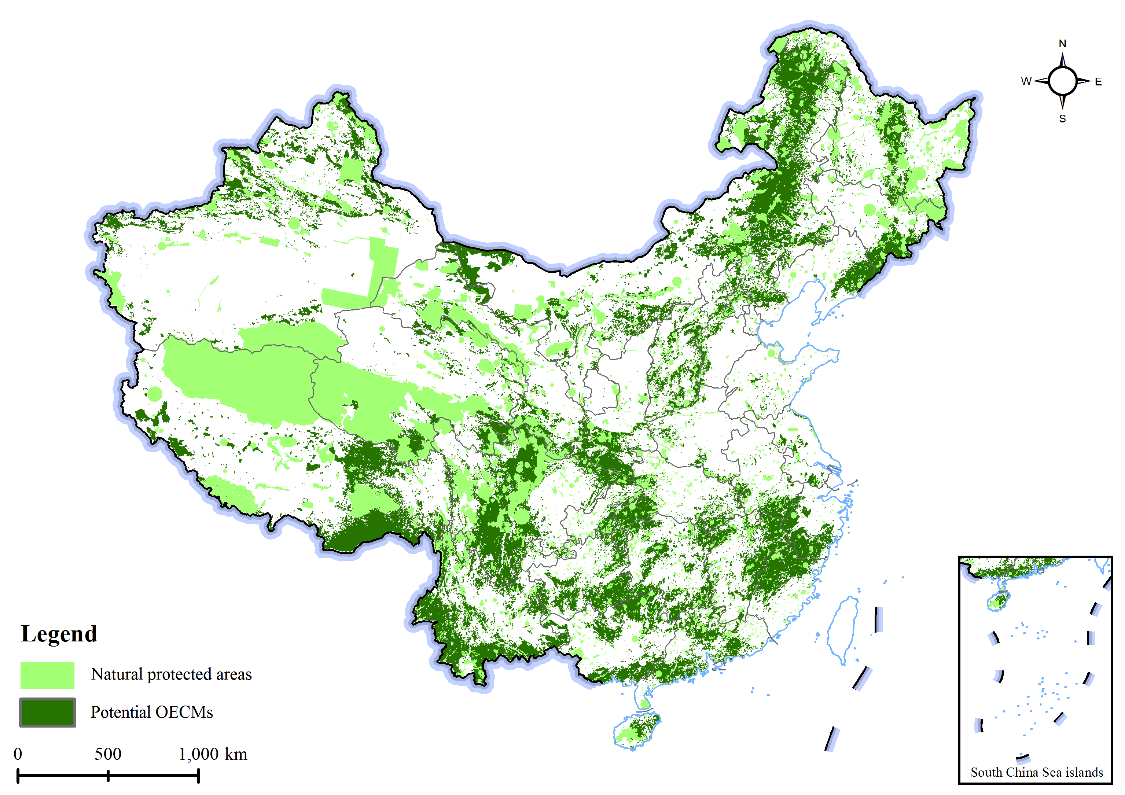Proposes Plan to Protect 30% of China’s Land in Line with International Convention
Biodiversity loss is a severe global issue. To mitigate and ultimately reverse this trend, the 15th meeting of the Conference of the Parties to the United Nations Convention on Biological Diversity adopted the Kunming-Montreal Global Biodiversity Framework. Its Target 3 is to protect at least 30% of the world’s land and ocean areas by 2030, also known as the “30x30” goal. Biodiversity conservation mainly involves the establishment of protected areas (PAs) and other effective area-based conservation measures (OECMs). For many countries, especially China with its large population and economic development needs, it is difficult or even impossible to designate 30% of the land area as traditional protected areas. However, China currently has no officially designated OECMs. The Ministry of Ecology and Environment estimates that by 2030, protected areas in the sense of the Convention on Biological Diversity will cover about 18% of China’s land area, including national parks, nature reserves, and nature parks. Therefore, an additional 12% of the land needs to be designated as OECMs to achieve the 30% target.
To balance urbanization, food production, and nature conservation, China implemented the “Three Zones and Three Lines” system in 2017. The “three zones” refer to urban space, agricultural space, and ecological space, while the “three lines” are the red lines that demarcate these spaces. Ecological space is a key area for protecting wildlife and ensuring the functioning of ecosystem services. The Ecological Protection Red Lines (EPRLs) include existing and planned PAs such as national parks, nature reserves, and nature parks (see Figure 1), as well as important wetlands and lakes, biodiversity conservation areas (habitats of rare and endangered species, ecological corridors, etc.), soil and water conservation areas, coastal regions, and marine ecological areas (such as mangrove and coral reef distribution areas) and other areas with important ecological functions. By the end of 2023, 31.7% of China’s land area had been included in the EPRLs.
Researchers from the Restoration Ecology Team of the South China Botanical Garden, led by Senior Scientist Ren Hai, have found that China’s PAs already protect about 75% of threatened plant species in situ. If 12% of the areas within the EPRLs that are important for biodiversity but not within existing or planned PAs are designated as OECMs, an additional 20% of threatened plants could be protected. In this way, only about 5% of threatened plants and some threatened animals would live outside the EPRLs, and their conservation could be achieved through ex situ conservation, maximizing efficiency.
Of course, designating parts of the EPRLs that are important for biodiversity as OECMs needs to meet international standards. Ren and his team suggest that China should accelerate the mainstreaming of OECMs, clarify national-level certification bodies and procedures, develop adaptive standards and management guidelines to identify potential OECMs within the EPRLs, strengthen biodiversity management objectives, promote cross-departmental cooperation and multi-stakeholder governance, and coordinate the multiple functions of natural ecological space to improve the effectiveness of biodiversity conservation. In addition, the stduy suggests that China’s diverse natural sanctuaries could also serve as important potential sites for OECMs.
The study points out that in this way, China can establish an in situ conservation system by 2030, with national parks as the main body, OECMs as a supplement, EPRLs as the foundation, and important natural ecological conservation and restoration areas such as forests, grasslands, wetlands, deserts, and oceans as support. This will ensure the protection of key areas for biodiversity conservation and important natural ecosystems, thus realizing the vision of harmony between humans and nature as set out in the Convention on Biological Diversity.
The research findings have recently been published in Trends in Ecology & Evolution (ranked first in the field of ecology in 2024 with an impact factor of 17.3). Senior Scientist REN Hai from the Center for Ecology and Environmental Sciences of the South China Botanical Garden is the first and corresponding author of the paper. Researchers Richard Corlett from Xishuangbanna Botanical Garden, Stephen Blackmore from the Royal Botanic Garden Edinburgh, and OUYANG Zhiyun from the Research Center for Eco-Environmental Sciences of the Chinese Academy of Sciences also made important contributions. The research was supported by the Guangdong Basic and Applied Basic Research Flagship Project. Paper link: https://doi.org/10.1016/j.tree.2025.06.014

Figure. Map of China’s Ecological Protection Red Lines showing potential OECM areas and protected areas.(Imaged by REN et al)
File Download: